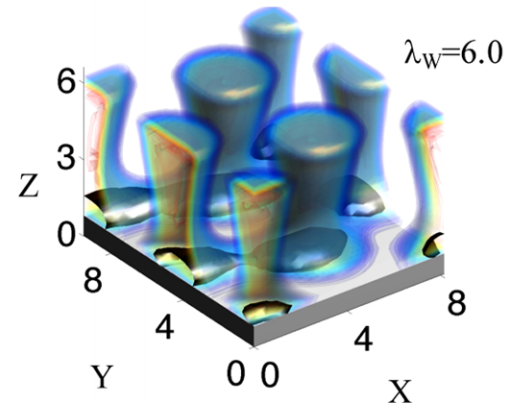Abstract
Using block copolymer microphases to guide the self-assembly of nanorods in thin films can give rise to polymeric materials with unique optical, thermal, and mechanical properties beyond those found in neat block copolymers. Often the design and manufacture of these materials require exquisite control of the nanorod distribution, which is experimentally challenging due to the large parameter space spanned by this class of materials. Simulation approaches, on the other hand, can access the thermodynamics that contribute to the nanorod distribution and hence offer valuable guidance toward the design and manufacture of the materials. In this work, we employ complex Langevin field-theoretic simulations to examine the thermodynamic forces that govern the assembly of nanorods in thin films of block copolymers with a particular focus on vertically oriented cylindrical and lamellar domains. Our simulations show that the nanorod geometry, the substrate selectivity for the distinct blocks of the copolymer, and the film thickness all play important roles in engineering both the nanorod orientation and spatial distribution in diblock copolymer thin films. In addition, we employ thermodynamic integration to examine how the nanorods alter the stability of vertical and horizontal domains in thin films, where we find that the tendency of the nanorods to stabilize a vertical orientation depends on both the film thickness and the nanorod concentration.
